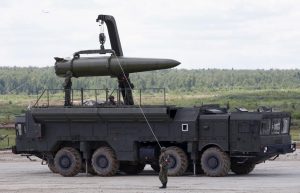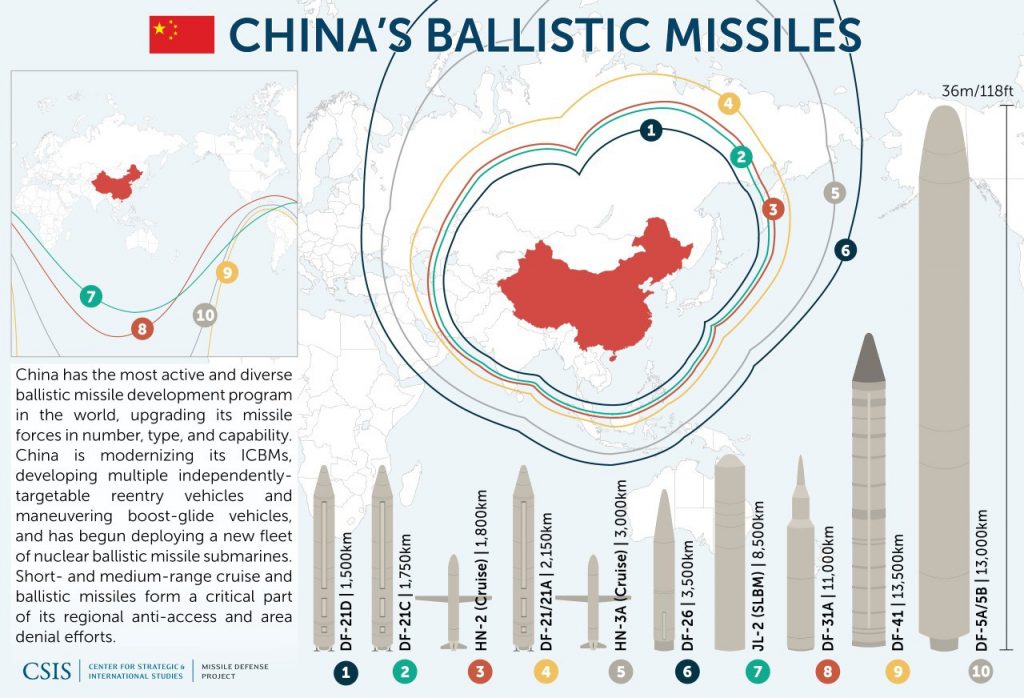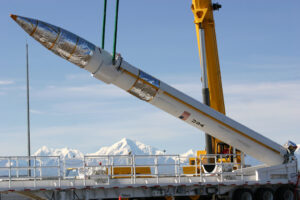DoD Wants Help To Spot — & Kill — Mobile Missiles
Posted on

Pentagon R&D chief Mike Griffin wants to revive the idea of space-based lasers for missile defense.
WASHINGTON: Three weeks from today, defense contractors will submit proposals for spotting hidden missile launchers — so the US military can destroy them before they ever fire. The winning entries could go on to flight demonstrators in just two years, a meteoric pace for the Pentagon.
It’s the first concrete step towards implementing the much-debated Missile Defense Review released last month, which called for an ambitious and expensive array of high-tech countermeasures, not just to usual suspects Iran and North Korea, but to the much larger arsenals of Russia and China.

A Russian 9M729 Novator ground-based cruise missile, at least one variant of which violates the INF treaty.
Outlined in a document blandly titled “Time-Sensitive Target Mission Payloads Demonstration” that was posted without fanfare on the federal government’s main contracting website Feb. 15, the plan describes acquiring a variety of satellites and surveillance assets to find and track often hard-to-find mobile missile launchers that can be hit before they pop off their first missile. The solicitation released to the defense industry invites US nationals (no foreigners allowed) to an industry day briefing March 1st, with initial proposals due March 15 and flight demonstrations by 2021.
Much of the language in the solicitation comes directly from the Missile Defense Review, which called for the US to build up its abilities to conduct “attack operations” to “degrade, disrupt, or destroy an adversary’s missiles before they are launched.”
Finding and hitting mobile missile launchers has long been a major concern for the Pentagon for at least three decades, ever since a massive “Scud Hunt” by aircraft and commandos largely failed to find Saddam Hussein’s crude truck-mounted missile launchers in the Iraqi desert. More sophisticated foes in more difficult terrain — Russian forests, Korean mountains and Chinese tunnels — would only be harder to hunt down.
Scud hunting matters because a good offense is arguably the best missile defense. For at least three years, senior officials and academics alike have worried publicly that, if you don’t find and destroy at least some of the enemy missiles before they fire — what the military calls “left of launch” — then an adversary might be able to overwhelm US missile defenses by sheer numbers. The ballistic missile defense system protecting the US from North Korea, for example, has only 44 Ground Based Interceptor (GBI) missiles installed (20 more are planned), and in testing, half of them miss — so flooding the zone might take just 23 incoming missiles.
North Korea in particular has been a top concern, and Congress has allocated more than $700 million to develop capabilities to quickly find and destroy Kim Jong Un’s mobile missiles over the past two years.
But as the missile review made clear, the Pentagon is no longer concerned only by North Korean and Iranian missiles. Both China and Russia have also built up sizable stockpiles of advanced systems that can move and shoot.
On Wednesday, Russian President Vladimir Putin warned that in the wake of Washington’s pending withdrawal from the INF missile treaty, he’s preparing for a Cuban missile crisis-style confrontation with the West.
The Russian leader said his forces can shoot long-range missiles from a variety of platforms, including “submarines or surface ships. And we can put them, given the speed and range [of Russian missiles] in neutral waters. Plus they are not stationary. They move and they will have to find them.”
American and NATO officials have all charged Russia with violating the INF treaty by developing and fielding the road-mobile 9M729 missile, which can reach targets between 300 and 3,200 miles away — ranges banned by the treaty.
But that threat pales in comparison to the Chinese arsenal of ballistic missiles, about 90 percent of which, according to US intelligence officials, falls within the INF-banned range. China, of course, was never a signatory to the agreement. Most recently, Beijing has made quite a bit of noise over its road mobile DF-26 intermediate-range ballistic missile, which some observers have dubbed the “carrier killer.”

Types and ranges of Chinese ballistic missiles (Graphic by Center for Security & International Studies) (Click to expand)
The new Pentagon study program is looking for new ways to counter these moves, and is asking the defense industry to help answer a few key questions. In particular, the Broad Agency Announcement (BAA) asks what kinds of commercial technologies can be used directly, or adapted through rapid prototyping initiatives, to “enable low latency persistent global ISR, navigation, and / or communications to enable this military mission and reduce the kill chain timeline.” The Pentagon is also looking for cost and survivability estimates in a white paper due next month.
Winners will be asked to participate in a 25-month effort to demonstrate their concepts, with flight testing to begin in 2021.

Undersecretary Griffin surrounded by admirers at the Space & Missile Defense Symposium.
Exactly what the Pentagon is looking for isn’t spelled out directly in the publicly-available documents. That suggests Griffin’s office is giving industry some room to experiment and come up with a diverse set of ideas. But the two-year timeline to start putting things in the air and on orbit means this won’t be a typical, decades-long Pentagon acquisition project.
There is also no mention of how the military plans on hitting these mobile launchers once they’re found and identified. Griffin has talked a lot over the past year about space-based lasers, which he worked on as a young scientist on Reagan’s Star Wars program. Some of the studies spelled out in the Missile Defense Review suggest the DoD is looking not only at Intelligence, Surveillance, & Reconnaissance (ISR) systems to spot the threat, but also at offensive action, from jamming or hacking missiles’ guidance systems to shooting them down, to destroying them on the launchpad.
Recent budgets have offered few chances to fund a new generation of satellites, weapons and ISR technologies, but Griffin has consistently sounded confident DoD can get it done. Late last year, he called for a “proliferation” of new sensors in low-earth orbit in order to track hypersonic threats from China and Russia.
“I don’t want to be in any one orbit,” Griffin said. “I want us to be as widely distributed in as many areas of the orbital regime that we can. We are not as prevalent in LEO [low earth orbit] as I would like us to be and I would like to see us proliferate there.” The smart money thinks he’s referring to so-called satellite swarms, large numbers of cubesats dispersed over a large area in low earth orbit.
Budgetary and technological hurdles aside, one thing is clear. Since taking office, Griffin has prioritized speed above almost all else, telling Senators last spring that “in a world where pretty much everyone today has equal access to technology, innovation is important…but speed becomes the differentiating factor.” And he doesn’t mean just brainstorming fast, but actually building stuff ASAP: “It is not about speed of discovery, it is about speed of delivery to the field.”
Subscribe to our newsletter
Promotions, new products and sales. Directly to your inbox.

